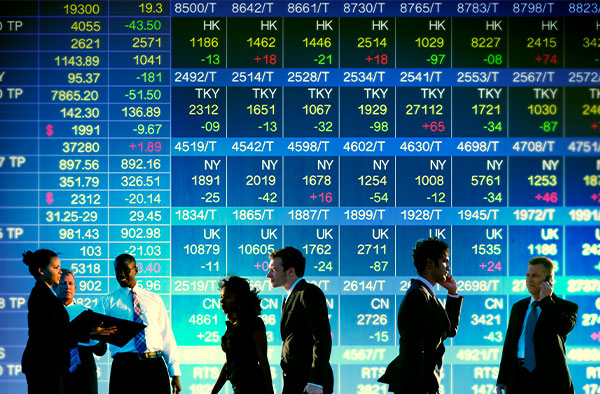
The Fine Line Between Content Moderation and Censorship in the Digital Age
Happy Friday! Before diving into the commentary, I want to share a chart posted by Crescat Capital’s Tavi Costa. China, the world’s largest consumer of commodities, just reported record imports of silver at a time when the country is reportedly installing clean energy at the equivalent rate of five large nuclear power plants per week.
Meanwhile:
— Otavio (Tavi) Costa (@TaviCosta) August 15, 2024
China reported record levels of silver imports. pic.twitter.com/LYYP7JYZXd
Silver is an important component of solar photovoltaic (PV) panels, meaning that for China to reach its ambitious climate targets, it must import massive amounts of the white metal. In June alone, China spent over $228 million on silver, a new monthly record based on Bloomberg data going back to 2009.
Noise with Consequences
Social media has become the place where many of us spend our time, share our lives and, increasingly, get our news. An estimated 12 billion combined hours are spent every day on these platforms, which now host over 5.3 billion unique “identities” or accounts.
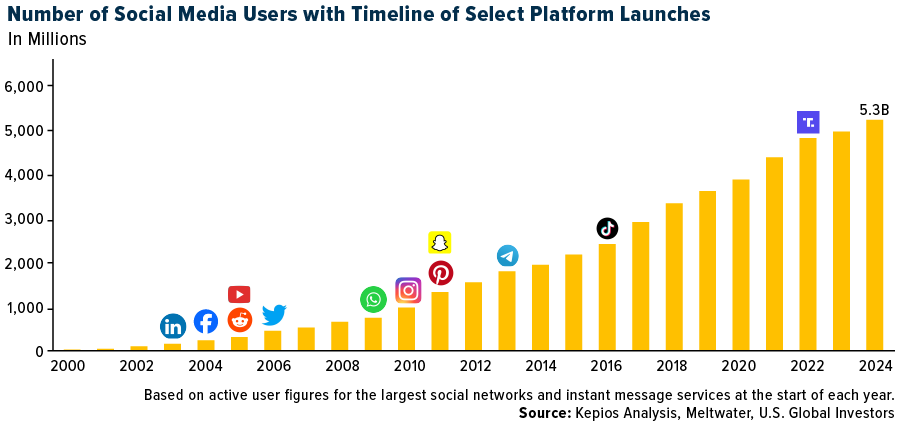
With scaling like that, misinformation can spread like wildfire. We’ve all seen the headlines, the “fake news” and the deepfakes that make you question your own eyes.
For investors, this isn’t just about the latest gossip. Misinformation (information that’s false or inaccurate) and disinformation (fake news deliberately meant to confuse and deceive) can move markets. A recent study showed a significant correlation between social media interactions and short-term stock market movements.
This isn’t just noise; it’s noise with consequences. Last year, Nationwide Mutual Insurance found that more than a third of non-retired investors aged 18-54 acted on financial information from the internet or social media that turned out to be misleading or incorrect.
Government Overreach in the Age of AI
The rise of artificial intelligence (AI) further complicates matters. We’ve already seen instances of AI-generated images causing market jitters, such as when someone posted fake images of an explosion near the Pentagon last year. As AI technology advances, distinguishing fact from fiction will become increasingly challenging.
Given these challenges, it’s no surprise that Americans are expressing a historic lack of confidence in news media and issuing calls for increased regulation of online content.
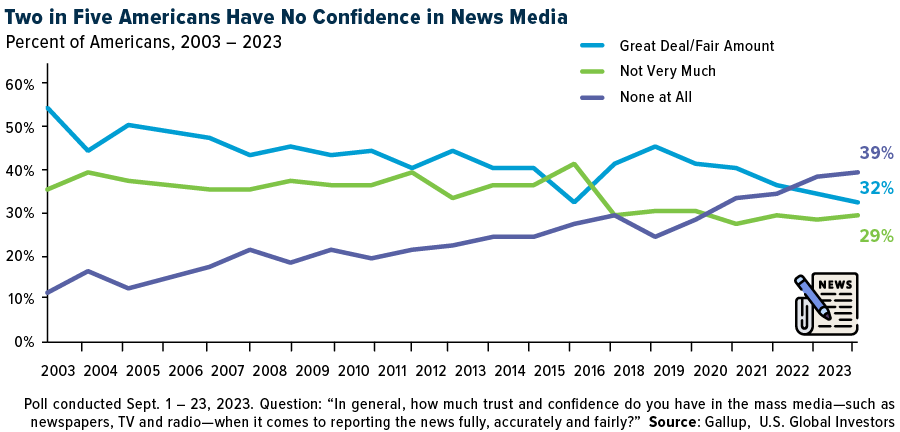
However, we must be extremely cautious about how we approach this issue. Governments, in their wisdom or perhaps in their panic, have decided to step in, and they’re not just playing referee… They’re threatening to be the players, coaches and umpires all at once.
International Implications of Social Media Policing
Take the recent violence in the United Kingdom. False rumors quickly spread about the identity of the man who allegedly attacked and killed two British girls on July 29, leading to nationwide riots and the arrest of over 1,000 people. So far, two men have been sentenced to months in prison for their activity on social media.
While it’s understandable that authorities want to crack down on those inciting violence, the British government’s threats have, in my opinion, gone too far. London’s police chief has even suggested that American citizens may be extradited from the U.S. to the U.K. to face charges for online comments. This is a dangerous overreach that sets a troubling precedent.
Similarly, the European Union’s warning to Elon Musk about content moderation on X (formerly Twitter) ahead of his Monday interview with former President Donald Trump smacked of attempted censorship. I agree that these platforms should have policies against explicitly illegal content, but vague “hate speech” laws are a slippery slope that can easily be abused.
Building a Balanced Information Diet
Here’s my take: Yes, misinformation is a problem. It can contribute to real-world chaos, from market fluctuations to societal unrest. But the solution isn’t to throw the baby out with the bathwater. We need to be smarter, not just louder.
That starts with educating ourselves. In the investment world, we’ve always lived by “trust, but verify.” It’s time we apply this to our information diet by fact-checking the news as though our portfolios depend on it. And just like our portfolios, it’s important to diversify where we get our news.
Having said that, I believe that if a social platform is going to moderate content, it must do so transparently. Let’s know the rules of the game. Vague threats of “hate speech” without clear definitions? That’s like playing chess where the rules change every move.
Vigilance and Liberty
Benjamin Franklin wisely said that those who would give up their liberties for a little temporary safety deserve neither liberty nor safety. The challenges of being an informed citizen and investor in today’s information landscape are real, but I don’t believe they justify heavy-handed government intervention.
Misinformation is a beast, but so is overreach. Let’s stay vigilant, think critically and remember that the free flow of information—even when it’s occasionally messy—is essential for both healthy markets and healthy democracies.
Stay invested, stay informed and most importantly, stay free.

Index Summary
- The major market indices finished up this week. The Dow Jones Industrial Average rose 2.94%. The S&P 500 Stock Index rose 3.91%, while the Nasdaq Composite climbed 5.29%. The Russell 2000 small capitalization index rose 2.93% this week.
- The Hang Seng Composite gained 10.45% this week; while Taiwan was up 4.10% and the KOSPI rose 4.20%.
- The 10-year Treasury bond yield fell 5 basis points to 3.885%.
Airlines and Shipping
Strengths
- The best performing airline stock for the week was Frontier, up 9.2%. EVA Air second quarter 2024 results beat consensus on better labor, maintenance, fuel, and other costs with second quarter unit costs trending flat quarter-over-quarter and up 0.4% year-over-year. Looking ahead to the second half of this year, checks suggest ongoing cargo unit revenue strength while Bank of America sees unit passenger revenues normalizing, but not collapsing, with tight transpacific supply helpful for the Taiwanese airlines.
- International Container Services reported its strongest ever quarterly net profits, a beat to JPMorgan forecasts by 6%. Highlights include the growth outlook remains positive with third quarter year-to-date volumes trending positively (mid-single digits), with defensive gateway port portfolio offering a cushion against recession and trade protectionism concerns.
- According to Bank of America, TUI third quarter EBIT of EUR232 million was 12% ahead of consensus, with a strong performance in both Markets & Airlines (M&A) and Holiday Experiences (HEX). Fiscal year 2024 guidance of over 25% EBIT growth was confirmed. Summer trading remains solid with M&A ASP/bookings up 3%/6% year-to-year.
Weaknesses
- The worst performing airline stock for the week was JetBlue, down 21.7%. Azul reported second quarter results with an adjusted EBITDA of BRL 1,050 million (-9% year-over-year), 6% below Bloomberg consensus. Goldman notes that the miss came on the back of lower-than-expected unit revenues, which were only partially offset by lower unit costs.
- Crude tanker demand remains soft tracking down 3% year-over-year in the past few weeks with Chinese crude imports down double digits year-over-year in the second half of July. Shipping rates have slipped below P&L breakeven in August, but forward curves suggest a rebound from September and a return to profitable levels (US$35-40k per day) by the fourth quarter of 2024, according to Bank of America.
- S&P downgraded JetBlue’s ratings from ‘B’ to ‘B- ‘, citing concerns about the airline’s financial health. The agency expects JetBlue’s funds from operations to debt ratio – a leverage ratio that is used to assess financial risk – to remain in the low single digits through 2025, with negative net cash flow from business operations. Moody’s downgraded JetBlue’s corporate family rating (CFR) to ‘B3’ from ‘B2’, stating that restoring JetBlue’s operating profit and cash flow to levels that would lead to materially stronger credit metrics will require several years.
Opportunities
- OEMs are struggling to keep up with demand for aircraft and airlines are reportedly having too much capacity. In Bank of America’s view, this is likely a result of the aging fleet of in-service aircraft. The bank thinks that airlines will use their scheduled delivery aircraft for fleet replacement, rather than fleet growth.
- While dry bulk rates remain in the summer lull, forward curves suggest a fourth quarter recovery led by seasonal coal imports into winter, ramping Brazil iron ore exports and easing seasonal disruptions in Guinea, according to Bank of America.
- Virgin Australia has ordered eight E190-E2 jets with deliveries commencing in the second half of 2025. Assuming each aircraft listing price at $75 million, this order should add around $600 million to Embraer’s backlog, according to JPMorgan.
Threats
- WestJet has announced that it will continue canceling flights “for the foreseeable future” after a hailstorm in Calgary damaged several of its planes, disrupting travel for thousands of passengers. The airline, which is the second largest in the country, reported that 16 aircraft, or 10% of its fleet, are still out of service nine days after the storm, which dropped golf ball-sized hail on parts of southern Alberta, including Calgary’s main airport. WestJet stated that it will take several weeks to source the specialized equipment and materials needed for repairs and inspections.

- For Teekay Tankers, with 50 vessels on the spot market, the recent drop in Suezmax rates, to $32,000 this week from $37,000 last week, and down from a $44,900 average in the second quarter of this year, and a drop in Aframax rates, could pressure estimates, Bank of America reports.
- The rating agencies are hesitant to downgrade Boeing to high yield. They seem to be writing off 2024 with respect to the rating, Bank of America explains, noting that they expect negative cash burn in 2024 and are looking out to 2025 for improved cash flow.
Luxury Goods and International Markets
Strengths
- Tapestry, best known for brands like Coach and Kate Spade, reported net sales and earnings per share that topped analysts’ expectations. The company is still working on closing an acquisition of Capri, after the Federal Trade Commission filed a lawsuit in an attempt to block the proposed transaction on Aprill 22 of this year.
- On Thursday, the United States reported retail sales for July that exceeded expectations, increasing by 1.0% month-over-month compared to the 0.3% forecast. Earlier in the week, China also reported stronger-than-expected retail sales. Both markets are significant consumers of luxury goods and services.
- Cettire, an online marketplace, was the top-performing S&P Global Luxury stock, rising 19.3% over the past five days. The company, which offers a range of products including clothing, shoes, bags, and accessories for men, women and kids, has been expanding its market presence both in Australia and internationally.
Weaknesses
- Overall, this week China reported weaker economic indicators, including softer industrial production, a rise in unemployment, and sluggish home sales data. Industrial production increased by 5.1% year-over-year, slowing from the 5.3% pace in June. The unemployment rate rose to 5.2% from 5.0%, and property investment fell by 10.2%, with residential property sales dropping by 25.9%.
- Investor confidence about the Eurozone and German economies collapsed in August. Germany, Europe’s largest economy, suffered its worst fall in economic sentiment in two years. The ZEW Index fell 22.6 points in a month to reach 19.2. The drop was almost three times as big as expected by analysts polled by Bloomberg.
- MGM China was the worst-performing S&P Global Luxury stock, losing 6.7% in the past five days. China released weaker economic data this week and Macau opertations are still recovering from the pandemcic lockdowns.
Opportunities
- LVMH’s collaboration with the Paris Olympics included a $160 million investment, designing uniforms, medals, and hosting events, marking a significant luxury brand sponsorship in Olympic history. This partnership is expected to enhance LVMH’s brand visibility and potentially boost its stock value.
- According to Bloomberg’s research, Ferrari was the only European carmaker to increase its projected revenue for 2024. The company’s profits are growing due to the enrichment of product mix and strong demand for personalization. Last year (2023) was a record-breaking year for the world’s most prestigious luxury car manufacturer, reporting a net revenue of nearly $6.5 billion, a 17% increase from the prior year. There are no signs of slowing down, as all the currently available models are sold out until the end of 2025. This means that prospective Ferrari buyers should not expect the delivery before 2026.

- China’s economy is struggling despite some government support. President Xi Jinping has set a growth target of about 5% for this year, but achieving this may be challenging under current conditions (with a very weak property market and consumer spending). Additional stimulus may have to follow to boost consumer confidence and meet the target growth expectations.
Threats
- This week, Bloomberg reported that the luxury market downturn is due to a decline in entry-level consumers and a shift among affluent customers toward spending on services and experiences. Luxury brands generally categorize their clients into two segments: top-tier clients, who make up about 3% of the population and account for 30% of revenue, and second-tier aspirational shoppers, who are more sensitive to economic slowdowns.
- Stocks recovered from the recent sell off spooked by a weaker employment report in the United States and Bank of Japan rate hike. However, investors are expecting more volatility and predict a broader wave of selling will follow. Asset managers overseeing hundreds of billions of dollars of investments said they were more likely to continue selling stocks than buy back in, with signs of weakness in the U.S. jobs market and global consumer trends lowering the bar for market aftershocks, Reuters reports.
- S&P Global Manufacturing PMI fell below 50 in July. The preliminary data for August, set to be released next week, may show manufacturing activity remains in contractionary territory.
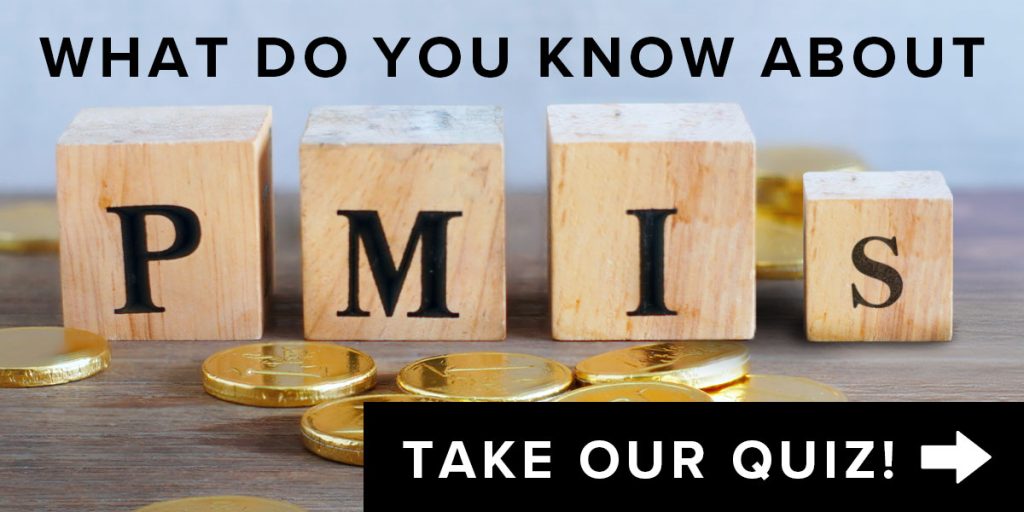
Energy and Natural Resources
Strengths
- The best performing commodity for the week was coffee, rising 6.02%, but the peak may be short lived as improving supply looks to cast the market back to a surplus, as reported by Bloomberg. Copper extended its rebound from the lowest close in five months as orders to withdraw the metal from London Metal Exchange warehouses suggest China’s demand slump may have bottomed out, according to Bloomberg.

- Liquidity in CME Group Inc.’s lithium contracts are on the rise again, with financial players looking to benefit from arbitrage opportunities in the market that are key to the energy transition. Open interest, a measure of market participation determined by the number of outstanding contracts, has continuously hit record after record since April, Bloomberg reports.
- European natural gas prices have rallied due to fears over Russian supply and a sharp decline in LNG imports. However, current levels are likely already sufficient to do so, and are probably somewhat in ‘overshoot’ territory, according to Morgan Stanley.
Weaknesses
- The worst performing commodity for the week was Chinese Lithium Carbonate, dropping 5.04%, on falling demand. Lithium prices are facing headwinds as the lithium market remains oversupplied on a lack of production cuts. Looking into the latest industry statistics from China, July’s lithium hydroxide production declined 8.3% month-over-month to 32Kt, but was still up 21% year-over-year, according to SMM. Meanwhile, according to Bank of America, July’s lithium carbonate output came in at 65Kt, down 1.94% month-over-month, but up 43.4% year-over-year. This implies a 150Kt surplus.
- Iron ore slumped — following its fourth weekly loss in five — on concerns that a slowdown in steelmaking at Chinese mills, combined with record shipments from Australia and Brazil, would lead to a glut. Bloomberg reports that futures dropped below $99 a ton in Singapore.
- Some of the top U.S. oil refiners are throttling back operations at their facilities this quarter, adding to concerns that a global glut of crude is forming. Marathon Petroleum Corp. — owner of the largest U.S. refinery — plans to operate its 13 plants at an average of 90% of capacity this quarter, the lowest for the period since 2020, according to Bloomberg.
Opportunities
- Chinese miners and refiners are driving a surge in African lithium output, shrugging off concerns over a glut to lock in future supplies of the critical battery metal. The continent is projected to account for almost 11% of global supply this year, compared with close to zero at the start of the decade, reports S&P Global Commodity Insights.
- State Grid Corp. of China has completed the world’s biggest pumped hydro plant as the nation ramps up its green energy capabilities. The last of 12 units at the Fengning plant started commercial operations on Sunday, the official China Energy News reported.
- Tourmaline Oil Corp. agreed to buy Crew Energy Inc. for C$1.3 billion ($947 million) as Canada’s biggest gas driller pushes to grow production in anticipation of rising gas demand for power and exports. The all-stock transaction is valued at approximately C$6.69 a share, representing a 72% premium over Crew’s closing price, according to a statement from Crew on Monday.
Threats
- Goldman will soon know if Escondida, the largest copper mine in the world, will settle with the largest single mine union in Chile or potentially face legal industrial action. As they flagged in April, several labor unions at operations representing 65% of 2024 Chilean copper output were entering negotiations this year. The outcome of the mediation process will be closely observed by other unions and miners in Chile, as it could set the tone for the balance of negotiations across the industry. By Friday, BHP Group announced a preliminary wage agreement to be agreed upon this weekend, otherwise the strike resumes at 8:00pm on Sunday.
- According to Bank of America, common threats to steel hubs include: 1) a high-interest rate environment which has generated a slowdown in investment and a slump in property markets; and 2) a surge in Chinese steel exports with their China M&M team expecting 100Mt of net exports in 2024 (up 20% year-over-year).
- Unions representing tens of thousands of workers in Australia’s major iron ore hub are preparing to negotiate potential wage rises with the biggest mining companies in the world, including BHP Group Ltd. and Rio Tinto Ltd., according to Bloomberg.
Bitcoin and Digital Assets
Strengths
- Of the cryptocurrencies tracked by CoinMarketCap, the best performer for the week was Sats, rising 16.10%.
- Japanese investment firm Metaplanet Inc. announced today that it purchased an additional 57.1 bitcoin worth about $3.3 million, as the company remains bullish on the digital asset. The firm bought an additional 500 million yen worth of bitcoin after it secured a $6.8 million loan last week to buy more crypto, writes Bloomberg.
- Hut 8 shares rose 3.3% during the premarket session in New York after the energy infrastructure operator and bitcoin miner was upgraded to buy from sell at HC Wainwright. The analyst says the risk-reward is now skewed to the upside following Hut 8’s second quarter results on Tuesday, writes Bloomberg.
Weaknesses
- Of the cryptocurrencies tracked by CoinMarketCap, the worst performer for the week was dogwifhat, down 24%.
- Jump Trading’s wallets are under scrutiny after a nasty crypto sell off. The value of cryptocurrencies held by digital wallets believed to belong to Jump, dropped by around $247 million in total between August 4 and 8, according to wallet tracker Arkham and reported by Bloomberg.
- The amount of Bitcoin held in reserve by the companies who earn a profit validating transactions on the blockchain has dropped to a three-year low in the wake of the April software code adjustment that slashed revenue. The total amount of Bitcoin held by miners has dropped to around 1,510,300 tokens, writes Bloomberg.
Opportunities
- After seven years Coinbase will be resuming its offering to residents of Hawaii, the only U.S. state where it didn’t operate, Bloomberg explains. 1.4 million Hawaiians will now be able to trade cryptocurrencies and earn interest on their holdings through staking.
- Goldman Sachs holds positions in a variety of bitcoin ETFs, according to a 13F filing. The investment bank, in its quarterly 13F report, disclosed that it holds seven out of 11 BTC ETFs in the U.S. Its largest holding, Bloomberg reports, is the iShares Bitcoin Trust (IBIT) at $238.6 million.
- Bitcoin continued to rally in tandem with global stocks at the close of last week and moving into this week. In fact, Bitcoin was up around 70 basis points, while both Ether and Bitcoin tokens remained below their elevated levels weeks ago. Bitcoin has retreated a bit as we close this week. In the medium term, however, macro factors “will continue to weigh on risk assets,” said Justin d’Anethan, head of business development in Asia-Pacific at Keyrock.

Threats
- The value of crypto hacks almost doubled to $1.6 billion in the first seven months of 2024, reports Bloomberg, inflated by a jump in digital-asset prices. While the value of funds stolen has surged, the number of hacks rose only marginally to 149 so far this year, up from 145 in the corresponding year.
- Mining profitability fell to all-time lows in August, according to a JPMorgan analyst. The network hashrate rose in the first two weeks of August and U.S. miners’ share of the Bitcoin network rose to a new record high. According to Bloomberg, the total market cap of the 14 U.S. listed miners has fallen 18% since the end of July.
- Advisers to the Biden administration stopped short of making any promises to crypto industry executives who voiced policy concerns, according to a participant on a Zoom call. The White House advisers didn’t discuss any policy changes with the group which included Coinbase, Kraken and Ripple, writes Bloomberg.
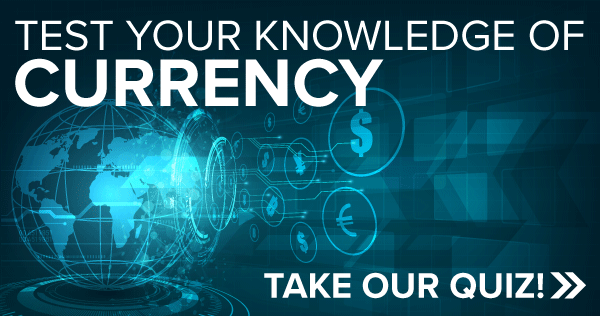
Defense and Cybersecurity
Strengths
- The U.S. government has approved Norway’s $580 million purchase of 16 HIMARS systems, along with a variety of rockets, missile pods, and essential support equipment. This marks a significant addition to Norway’s military capabilities.
- The Biden administration approved a $20 billion arms deal with Israel, including the sale of up to 50 F-15 fighter jets, reaffirming its commitment to Israel’s defense despite rising concerns about the conduct of its military operations in Gaza.
- The best performing stock in the XAR ETF this week was Rocket Lab, rising 22.16%, after announcing that two Mars-bound spacecraft for NASA’s Escapade mission have been shipped to Florida for launch on Blue Origin’s New Glenn rocket. The aim is to study Mars’ plasma and magnetic fields.
Weaknesses
- This week Russian air defenses intercepted 117 drones and four tactical missiles in one of the largest attacks of the war, with strikes reported across various regions, including areas far from the Ukrainian border. Meanwhile, Ukrainian forces now control 74 towns and villages in Russia’s Kursk region, as both sides continue to engage in intense military operations.
- Norway’s Finance Ministry reports that increasing defense spending will be the primary factor driving the country’s long-term fiscal challenges, surpassing even the costs associated with an aging population, as the nation adapts to new security threats.
- The worst performing stock in the XAR ETF this week was Woodward Inc., falling 0.80% on little news.
Opportunities
- Northrop Grumman demonstrated an innovative modular tooling approach for manufacturing large composite solid rocket motor cases, enabling flexible design modifications and potentially reducing development costs and lead times by over 50%.

- Rheinmetall AG is expanding its presence in the U.S. defense market by acquiring Loc Performance Products LLC for $950 million. The aim is to enhance its manufacturing capacity and compete in major military vehicle programs.
- On August 11, 2024, Space Norway and Northrop Grumman launched a two-satellite broadband constellation to enhance secure military and commercial communications in the Arctic, addressing growing strategic concerns due to increased Chinese and Russian interest in the region.
Threats
- International mediators are negotiating with Israel in Qatar to pause the ongoing war with Hamas in Gaza. The hope is to ease tensions with Iran, despite challenges and disagreements on the terms of a cease-fire.
- Israel and its allies are on high alert, preparing for a potential retaliatory attack from Iran following the killing of a Hamas leader, as diplomatic efforts for a cease-fire continue in Qatar.
- Ukraine’s bold incursion into Russia’s Kursk region has shifted the battlefield dynamics, revealing vulnerabilities in Russian defenses while raising strategic questions about the future direction of the conflict.
Gold Market
This week gold futures closed the week at $2,546.70, up $73.30 per ounce, or 2.96%. Gold stocks, as measured by the NYSE Arca Gold Miners Index, ended the week higher by 6.91%. The S&P/TSX Venture Index came in up 5.36%. The U.S. Trade-Weighted Dollar fell 0.67%.
Strengths
- The best performing precious metal for the week was silver, up 5.26%, in what seems like a precious metals market beginning to get real traction. Barrick Gold shares rose as much as 7.1% in early Monday trading, its biggest intraday gain since March 2023, after the gold miner’s second-quarter adjusted earnings per share beat the average analyst estimate, according to Bloomberg.
- Pandora lifted its organic revenue guidance for the full year and reiterated its EBIT (earnings before interest and taxes) margin target for 2026 despite higher silver prices. Analysts say the jewelry maker’s revised 2024 outlook is to a degree offset by unfavorable forex spending and is unlikely to see significant changes to consensus, according to Bloomberg.
- According to JP Morgan, Evolution Mining’s EBITDA was 8% ahead of consensus and underlying net profit beat by 14%. The final dividend of $0.05 per share was lighter than their $0.07 expectation, and net debt was 5% ahead of their forecast.
Weaknesses
- The worst performing precious metal for the week was gold, but still up 2.96%. Endeavour Silver shares plummeted as much as 17% after the company said it expects a failure at the Guanacevi mill to impact annual production and cost guidance. TD Cowen forecasts the announcement will cause concerns over liquidity.
- Lucara Diamond announced its second-quarter results with production from its open-pit Karowe mine (Botswana), a miss due to slight differences in ore throughput. Earnings (and revenues) were also a miss due to lower-than-expected diamonds sold, according to Bloomberg.
- Franco Nevada’s adjusted earnings per share (EPS) of $0.75 was lower than consensus of $0.81; adjusted EBITDA came in at $222 million, 7% lower than Scotia’s consensus estimate of $239 million on lower revenue.
Opportunities

- Gold Fields has announced that it will acquire 100% of TSX-listed Osisko Mining for an all-cash consideration of $1.6 billion. Upon transaction completion (subject to 2/3 Osisko shareholder approval), Gold Fields will consolidate its existing ownership in the Windfall project (Quebec) and eliminate obligations comprised of a C$300 million deferred cash payment and a $75 million exploration obligation. The deal is expected to close in the fourth quarter and will be funded with existing cash reserves, debt facilities plus a new $500 million committed bank facility, according to JP Morgan.
- Orla Mining is raising its full-year production guidance to 120,000-130,000 ounces gold from 110,000-120,000 ounces previously. It’s also decreasing its all-in sustain costs (AISC) guidance to $800-$900 per ounce from $875-$975 previously, according to Scotia.
- Pandora’s chief executive officer expects it will take less than 10 years before consumers buy more lab-grown diamonds than mined stones because they increasingly weigh up costs and climate impact when buying jewelry, according to Bloomberg.
Threats
- Based on the price performance during previous recessions, while gold outperformed other commodities before and during recessions, stocks tended to act differently. World metals & mining stocks on average rallied by 9% three months before a recession started but corrected by 20% during the recession, according to JP Morgan.
- Yukon Premier Ranj Pillai said his government is not prepared to halt all mining activity on the First Nation of Na-Cho Nyäk Dun’s (FNNND) traditional territory, though it is willing to grant some of the First Nation’s requests. This was in response to the First Nation releasing a statement on July 3 demanding the government stop all exploration and mining activities in its traditional territory, according to BMO.
- Regarding the acquisition of Osisko Mining, investors will look at the fact that Gold Fields has given up a significant portion of the expected cash flows over the next 12-24 months while undertaking development and execution risk. This transaction puts even more emphasis on Salares Norte (Chile) ramp-up, which has not gone smoothly yet, according to BMO.


U.S. Global Investors, Inc. is an investment adviser registered with the Securities and Exchange Commission (“SEC”). This does not mean that we are sponsored, recommended, or approved by the SEC, or that our abilities or qualifications in any respect have been passed upon by the SEC or any officer of the SEC.
This commentary should not be considered a solicitation or offering of any investment product. Certain materials in this commentary may contain dated information. The information provided was current at the time of publication. Some links above may be directed to third-party websites. U.S. Global Investors does not endorse all information supplied by these websites and is not responsible for their content. All opinions expressed and data provided are subject to change without notice. Some of these opinions may not be appropriate to every investor.
Holdings may change daily. Holdings are reported as of the most recent quarter-end. The following securities mentioned in the article were held by one or more accounts managed by U.S. Global Investors as of (06/30/2024):
JetBlue Airways
Embraer SA
Boeing Co/The
LVMH
Ferrari NV
Pandora A/S
Endeavour Mining PLC
Franco-Nevada Corp.
Osisko Gold Royalties Ltd.
Orla Mining Ltd.
Marathon Petroleum
BHP Group
*The above-mentioned indices are not total returns. These returns reflect simple appreciation only and do not reflect dividend reinvestment.
The Dow Jones Industrial Average is a price-weighted average of 30 blue chip stocks that are generally leaders in their industry. The S&P 500 Stock Index is a widely recognized capitalization-weighted index of 500 common stock prices in U.S. companies. The Nasdaq Composite Index is a capitalization-weighted index of all Nasdaq National Market and SmallCap stocks. The Russell 2000 Index® is a U.S. equity index measuring the performance of the 2,000 smallest companies in the Russell 3000®, a widely recognized small-cap index.
The Hang Seng Composite Index is a market capitalization-weighted index that comprises the top 200 companies listed on Stock Exchange of Hong Kong, based on average market cap for the 12 months. The Taiwan Stock Exchange Index is a capitalization-weighted index of all listed common shares traded on the Taiwan Stock Exchange. The Korea Stock Price Index is a capitalization-weighted index of all common shares and preferred shares on the Korean Stock Exchanges.
The Philadelphia Stock Exchange Gold and Silver Index (XAU) is a capitalization-weighted index that includes the leading companies involved in the mining of gold and silver. The U.S. Trade Weighted Dollar Index provides a general indication of the international value of the U.S. dollar. The S&P/TSX Canadian Gold Capped Sector Index is a modified capitalization-weighted index, whose equity weights are capped 25 percent and index constituents are derived from a subset stock pool of S&P/TSX Composite Index stocks. The NYSE Arca Gold Miners Index is a modified market capitalization weighted index comprised of publicly traded companies involved primarily in the mining for gold and silver. The S&P/TSX Venture Composite Index is a broad market indicator for the Canadian venture capital market. The index is market capitalization weighted and, at its inception, included 531 companies. A quarterly revision process is used to remove companies that comprise less than 0.05% of the weight of the index, and add companies whose weight, when included, will be greater than 0.05% of the index.
The S&P 500 Energy Index is a capitalization-weighted index that tracks the companies in the energy sector as a subset of the S&P 500. The S&P 500 Materials Index is a capitalization-weighted index that tracks the companies in the material sector as a subset of the S&P 500. The S&P 500 Financials Index is a capitalization-weighted index. The index was developed with a base level of 10 for the 1941-43 base period. The S&P 500 Industrials Index is a Materials Index is a capitalization-weighted index that tracks the companies in the industrial sector as a subset of the S&P 500. The S&P 500 Consumer Discretionary Index is a capitalization-weighted index that tracks the companies in the consumer discretionary sector as a subset of the S&P 500. The S&P 500 Information Technology Index is a capitalization-weighted index that tracks the companies in the information technology sector as a subset of the S&P 500. The S&P 500 Consumer Staples Index is a Materials Index is a capitalization-weighted index that tracks the companies in the consumer staples sector as a subset of the S&P 500. The S&P 500 Utilities Index is a capitalization-weighted index that tracks the companies in the utilities sector as a subset of the S&P 500. The S&P 500 Healthcare Index is a capitalization-weighted index that tracks the companies in the healthcare sector as a subset of the S&P 500. The S&P 500 Telecom Index is a Materials Index is a capitalization-weighted index that tracks the companies in the telecom sector as a subset of the S&P 500.
The Consumer Price Index (CPI) is one of the most widely recognized price measures for tracking the price of a market basket of goods and services purchased by individuals. The weights of components are based on consumer spending patterns. The Purchasing Manager’s Index is an indicator of the economic health of the manufacturing sector. The PMI index is based on five major indicators: new orders, inventory levels, production, supplier deliveries and the employment environment. Gross domestic product (GDP) is the monetary value of all the finished goods and services produced within a country’s borders in a specific time period, though GDP is usually calculated on an annual basis. It includes all private and public consumption, government outlays, investments and exports less imports that occur within a defined territory.
The S&P Global Luxury Index is comprised of 80 of the largest publicly traded companies engaged in the production or distribution of luxury goods or the provision of luxury services that meet specific investibility requirements.
The ZEW Indicator of Economic Sentiment is a simple sentiment indicator created out of the monthly ZEW Financial Market Survey.




















